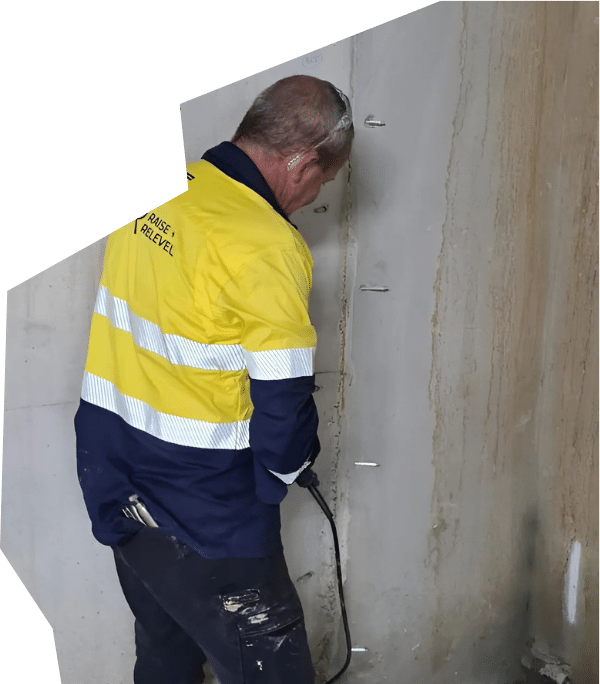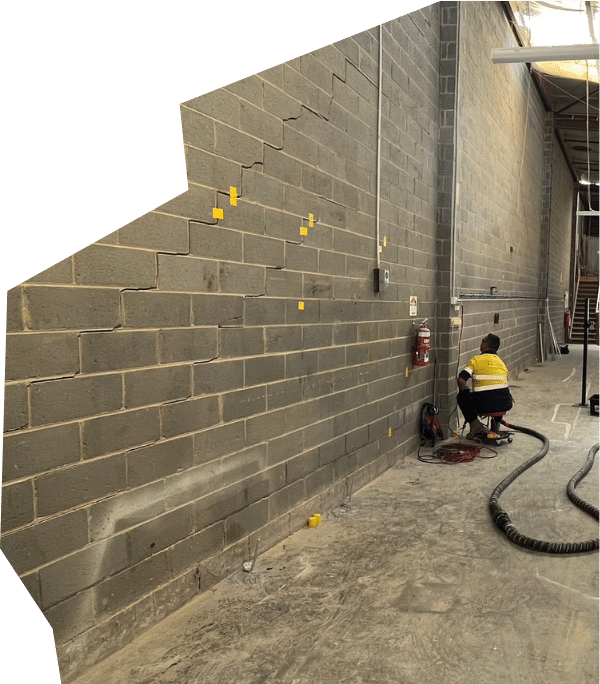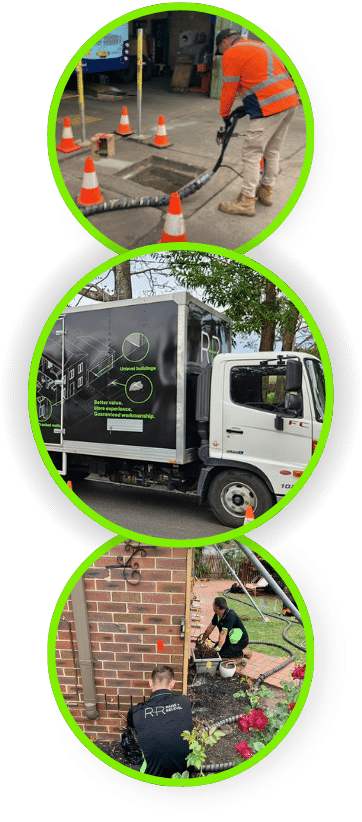Resin injection underpinning is a method of foundation repair. The injection process is simple – the solution is injected into the building or house foundations. Once the solution reaches the surrounding soil, it expands. This method compresses the existing soil while filling in any cracks and voids.
It’s used to reinforce or repair foundations, underground tunnels and pipes. It fills in the gaps to make it watertight and stronger. There are different types of underpinning; concrete underpinning requires excavation and laying fresh concrete to stabilise a structure. The modern and more efficient method is chemical underpinning. Chemical underpinning utilises resin injections to address structural repair.
It can be used to address a variety of foundation problems, including:
House Subsidence
Unlevel buildings can be easily addressed with a resin injection. While subsidence is a common outcome in properties, weak soil or other issues can cause severe damage if subsidence continues. Your doors and windows are a good starting point – if there are widening gaps or you’re struggling to open and close doors and windows, you may have a big issue.
Uneven floors
An unlevel floor isn’t always the most obvious symptom of subsidence issues. If you notice the issue, it’s a strong indication that there are foundational issues to address. The most obvious sign of an uneven floor is visible across the other side of a room.
Uneven floors can also contribute to misaligned windows and doors. A structural engineer can assess how big a problem the issue is.
Cracking walls
A crack isn’t always terrible news; many hairline cracks are superficial. Big cracks point to a larger issue and impact the bearing capacity of a home or property. Look for exterior cracks in the concrete slab, brickwork, and render. Interior cracks to be concerned about are in the floor tiles, walls, and plaster. If new cracks appear or the existing ones grow longer or wider you need professional assistance.







